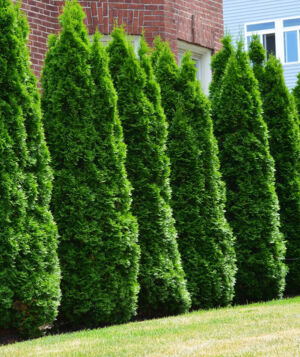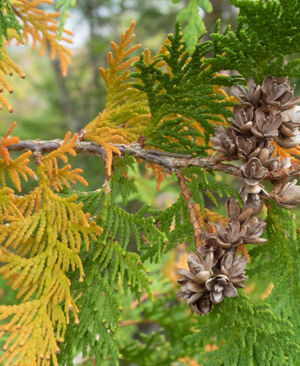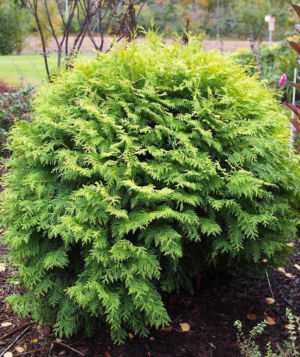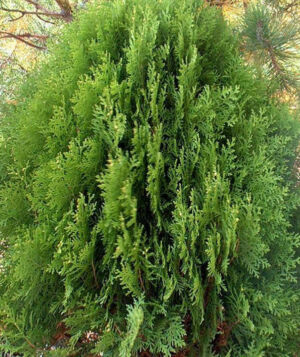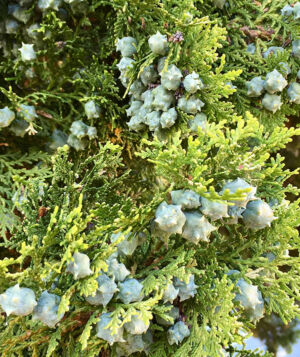Eastern Arborvitae- Thuja occidentalis
Description
General: A dense, conical-pyramidal, often single trunked native evergreen tree with short branches reaching 40-60.’
Leaves: Scale like, pointed and aromatic when crushed. Green to green yellow in flattened sprays.
Cones: Oblong and scaled 1/3-1/2″ long. Yellow and erect when young and brown and pendent by the end of the summer.
Bark: Gray to reddish brown with connecting ridges and furrows.
Attributes: Used as a specimen tree, hedge or foundation planting.
Culture
Hardiness: Zone 3 to 7. Does not do well in the south.
Growing Conditions: Prefers moist, deep, well drained soils in full sun.
Maintenance: No regular pruning necessary. Susceptible to bagworm , leaf miner and a target for deer browsing.
Transplanting: Balled and burlapped or from container anytime.
Our Experience
Experience at Great Hill
Winter dessication and occassional deer browsing are our only issues to date. Our specimens are kept fenced off from the deer during the winter months due to aggressive browsing.
Oriental Arborvitae- Thuja orientalis
Description
General: A large shrub or small tree that is dense and compact when young, becoming loose and open with age.This arborvitae is often single trunked and grows up to 25′ when in cultivation.
Leaves: Evergreen, scale like, aromatic and flattened sprays of foliage. While green during the growing months, foliage color does vary in the winter depending on temperature and conditions. Colors can range from gold/yellow to bronze/brown.
Cones: Egg shaped and green maturing to brown 3/4″ long
Bark: Red- brown and exfoliating on mature trees.
Attributes: Used as a specimen tree or hedge in southern states where it thrives. Does not attract as much deer browsing as thuja occidentalis.
Culture
Hardiness: Zone 6 to 11.
Growing Conditions: Tolerant of most soils with the exception of overly wet/ non draining types. Prefers full sun and good air circulation.
Maintenance: No regular pruning necessary. Susceptible to bagworm , leaf miner, spider mites and canker.
Transplanting: Balled and burlapped or from container anytime.
Our Experience
Experience at Great Hill
We have a dwarf cultivar of oriental arborvitae called ‘Aurea Nana,’ in our Monet Garden. Aurea is an ornamental globe shaped cultivar with golden yellow foliage that adds texture and color to its location along a shrub border. While considered marginal to zone 6, we haven’t had any issues with dieback of this cultivar during the winter months.

